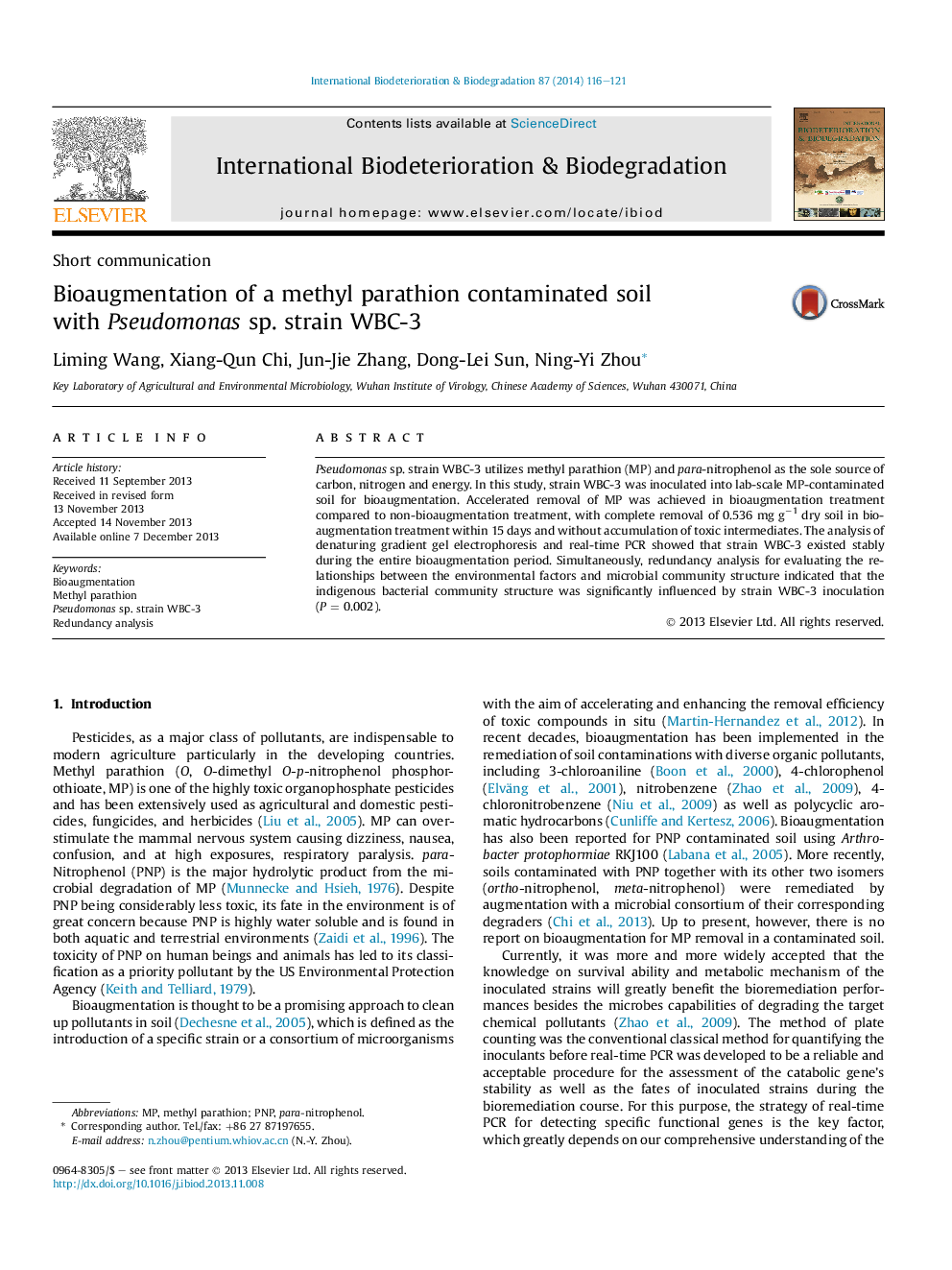| Article ID | Journal | Published Year | Pages | File Type |
|---|---|---|---|---|
| 4365005 | International Biodeterioration & Biodegradation | 2014 | 6 Pages |
•Methyl parathion was removed without accumulation of toxic intermediates.•Inoculated Pseudomonas sp. strain WBC-3 existed stably during the entire treatment.•The inoculation had significant effect on microbial community structure.
Pseudomonas sp. strain WBC-3 utilizes methyl parathion (MP) and para-nitrophenol as the sole source of carbon, nitrogen and energy. In this study, strain WBC-3 was inoculated into lab-scale MP-contaminated soil for bioaugmentation. Accelerated removal of MP was achieved in bioaugmentation treatment compared to non-bioaugmentation treatment, with complete removal of 0.536 mg g−1 dry soil in bioaugmentation treatment within 15 days and without accumulation of toxic intermediates. The analysis of denaturing gradient gel electrophoresis and real-time PCR showed that strain WBC-3 existed stably during the entire bioaugmentation period. Simultaneously, redundancy analysis for evaluating the relationships between the environmental factors and microbial community structure indicated that the indigenous bacterial community structure was significantly influenced by strain WBC-3 inoculation (P = 0.002).
